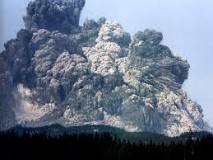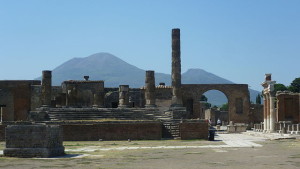Mount St. Helens erupted in 1980. The volcano, located in the state of Washington, discharged debris and steam eleven miles into the air. It had erupted previously in 1857. The eruption, even though expected, killed 57 people and caused billions of dollars in damages. Children can learn more at: http://www.fs.usda.gov/mountsthelens.
Mount Pinatubo
Mount Pinatubo erupted in 1991 in the Philippines. The volcano, dormant for some time, disgorged ash and gas 60 miles into the air. Sulfuric acid droplets formed a layer in the earth’s atmosphere. It actually lowered the earth’s temperature by about one degree for several years. Children could learn about volcanoes in general at: Volcanoes.
Vesuvius in Italy erupted in AD 79. Clouds of sulfuric acid killed nearby inhabitants, and volcanic ash buried the cities of Pompeii and Herculaneum. The cities were buried and forgotten for centuries. Children could find out how and when Pompeii and Herculaneum were discovered. Older children could visit Vesuvius.
Krakatoa erupted in 1883, creating one of the biggest volcanic eruptions known. Located near Indonesia, the volcano had been dormant for over 200 years. Five cubic miles of the mountain were blown into the atmosphere, changing weather for years. Over 36,000 people died from the volcano or from the ensuing tidal waves. Most of the island was destroyed. Children could learn more about Krakatoa and volcanoes in general at: Krakatoa.

